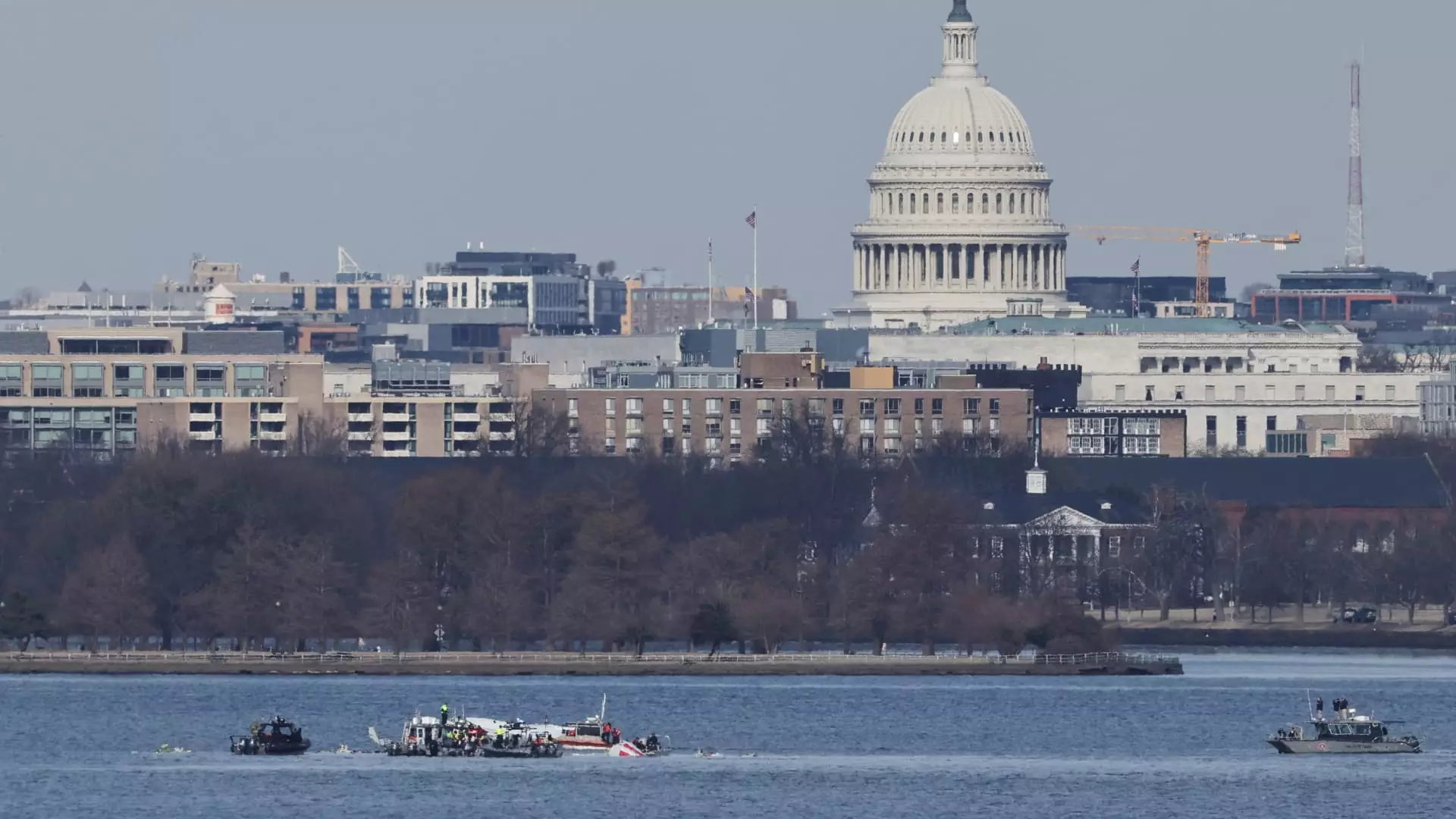On a fateful Wednesday night, the skies above the Potomac River bore witness to an unprecedented tragedy, as an Army Black Hawk helicopter collided with American Airlines Flight 5342. This harrowing incident not only resulted in a catastrophic loss of lives but also plunged the aviation community into a vortex of questions regarding operational protocols, airspace management, and regulatory compliance. With all 64 passengers on the jet and the three crew members aboard the helicopter perishing in the conflagration, this event marked the deadliest air crash in the United States since 2001—an unsettling reminder of the latent perils associated with aviation operations.
Understanding the mechanics of the crash necessitates a closer look at the context in which it occurred. American Airlines Flight 5342, operated by PSA Airlines, was approaching Reagan National Airport when the mishap took place. The Bombardier CRJ-700, maintained at an altitude of approximately 300 feet, was completing its final approach toward Runway 33 when it collided with the Black Hawk helicopter, which was reportedly conducting an annual training flight. This particular section of airspace, critically important due to its proximity to a major airport and military installations, is notorious for its congestion and strict regulations imposed by the Federal Aviation Administration (FAA).
As it is common knowledge, helicopters operating near busy airports are mandated to maintain altitudes below 200 feet. This regulation aims to ensure safe distances between fixed-wing aircraft and rotary-wing flights, particularly in the complex airspace surrounding the nation’s capital. The raised concerns revolve around whether the Black Hawk adhered to these altitude restrictions. Investigations are scrutinizing flight towers throughout Washington, including potential miscommunication among air traffic controllers that may have contributed to this deadly encounter.
The regulatory landscape for aviation within the Washington, D.C. airspace is intricate and meticulously structured. Specific helicopter zones exist to manage the flow of air traffic and to safeguard against collisions. National Transportation Safety Board (NTSB) member Todd Inman observed during a press briefing that there are clearly defined helicopter tracks designed for safe navigation through Washington. However, if those tracks were improperly navigated or if controllers were inadequately staffed on the night of the accident—a situation suggested to be the case—then a cascade of errors may have ensued.
Adding to the complexity, the FAA issued new restrictions following the accident, reflecting immediate reactions to create a safer environment. Although exceptions are made for medical and law enforcement operations, the restrictions signal a shift in the operational protocols that may become prominent in ongoing discussions regarding helicopter safety.
The NTSB has embarked on an extensive investigation, collecting vital information from both the cockpit voice recorder and flight data from the American Airlines jet. The meticulous process ofascertaining each detail is paramount. As NTSB Chair Jennifer Homendy emphasized, while they may have robust data on hand, verification and thorough investigation are essential before drawing any conclusions.
Political figures, including Defense Secretary Pete Hegseth and former President Donald Trump, have publicly commented on the incident. Their assertions regarding altitude violations and “mistakes” raise an ethical question regarding accountability and transparency in aviation safety and military operations. The hurried statements from high-placed officials imply a potential shift in blame before the formal completion of investigative processes, amplifying scrutiny around procedural adherence in both military training and commercial airline operations.
This tragedy signifies a pivotal moment in the realm of aviation safety, as it marks the end of a notably peaceful period that had persisted since 2009 without a fatal commercial flight incident in the U.S. Despite an increase in passenger traffic—over 25%—the industry had successfully navigated around numerous potential perils until now.
Moreover, discussions surrounding staffing shortages and late-night operational conditions at Reagan National Airport have reignited debates about the adequacy of current staffing policies in handling peak traffic, particularly during challenging night operations. Ensuring that sufficient controllers are present to monitor air traffic is vital, especially in complicated airspace regions like Washington, D.C.
As the investigation unfolds and experts delve into the contributing factors leading to this harrowing collision, one cannot overlook the broader implications for aviation safety standards. This incident serves as a poignant reminder that safety in the air is a collective responsibility involving military, commercial aviation, regulators, and educational bodies. The aviation community must scrutinize this tragedy to forge new pathways toward safer skies for all—all while honoring the memory of those who lost their lives in this grievous accident. Only through a thorough investigation and subsequent reform can the industry strive to ensure the safety of its passengers and crew members alike.

